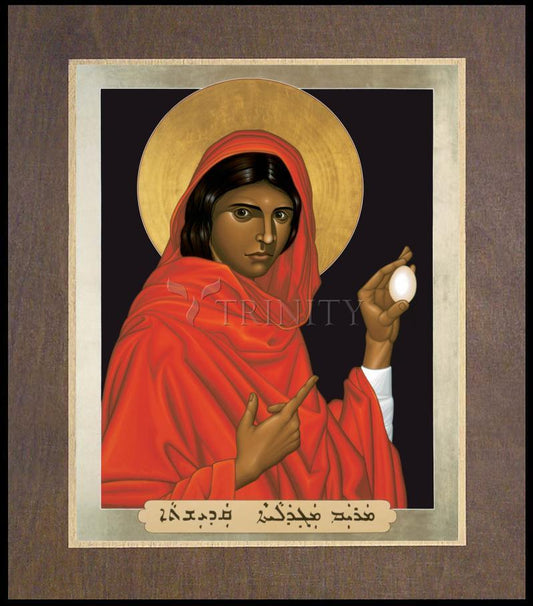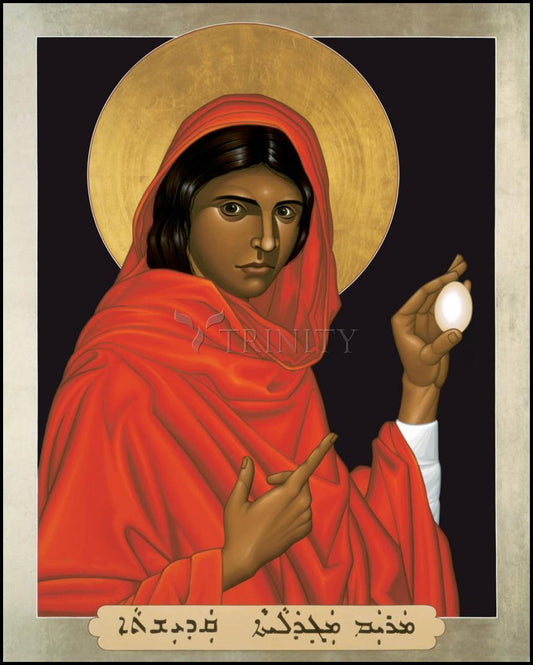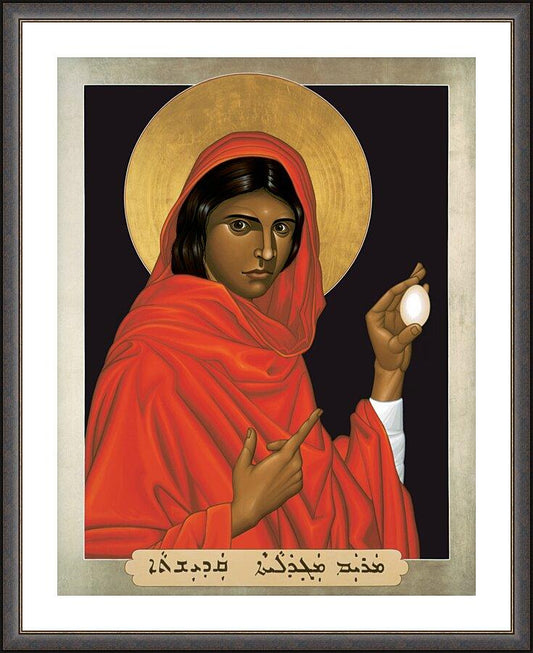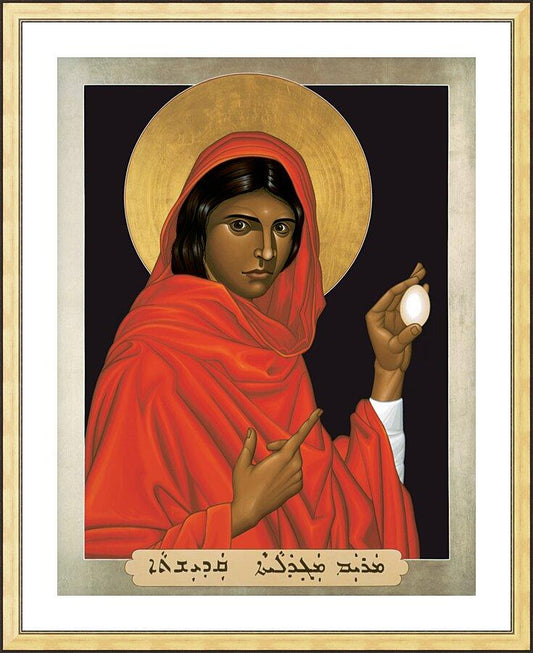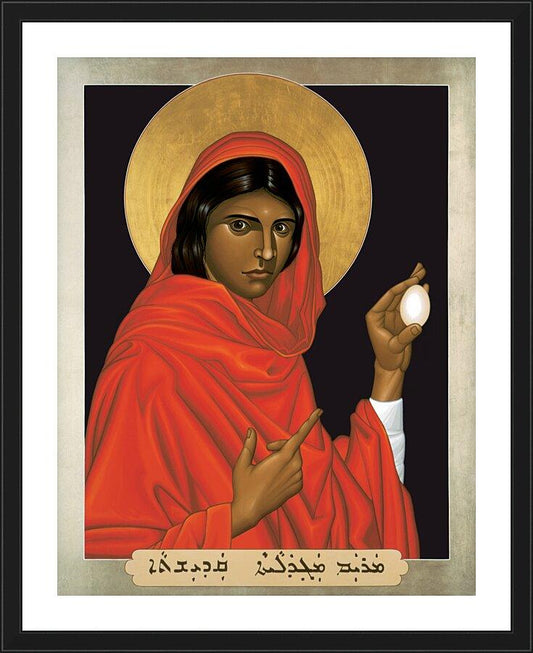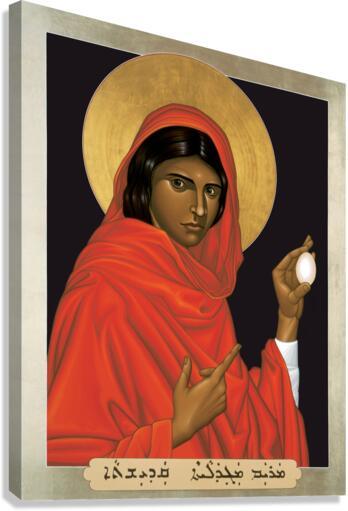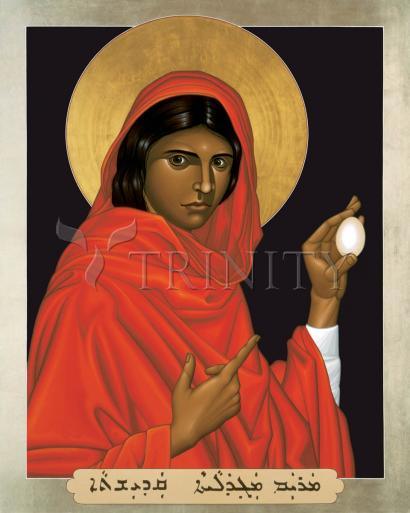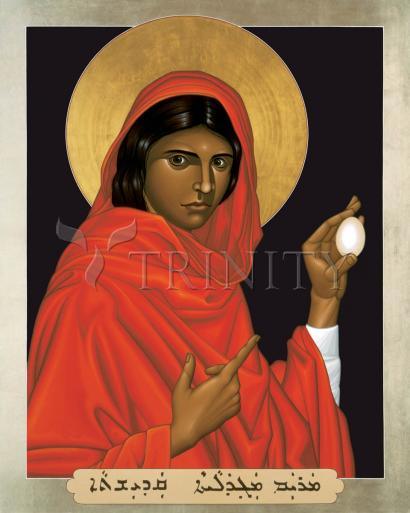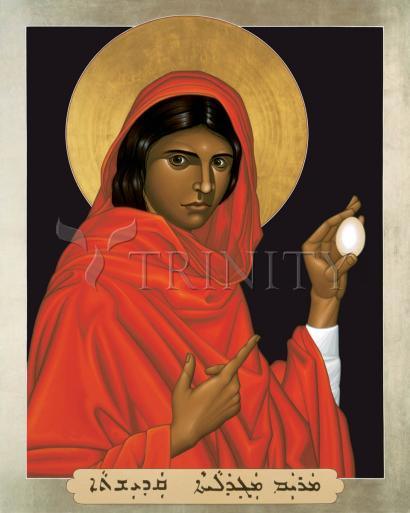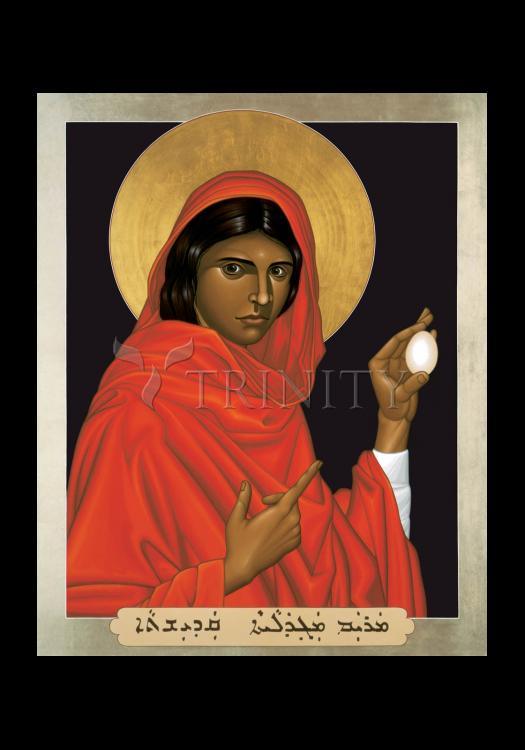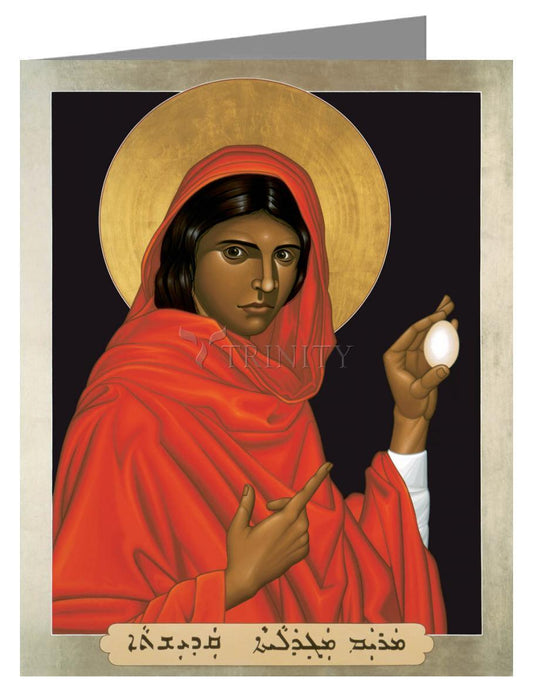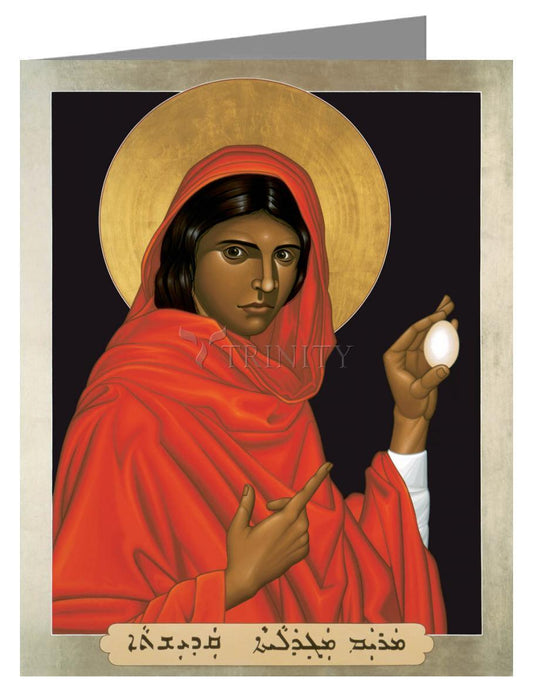ARTIST: Br. Robert Lentz, OFM
ARTWORK NARRATIVE:
According to the ancient tradition of the East, Mary Magdalene was a wealthy woman from whom Christ expelled seven "demons." During the three years of Jesus’ ministry, she helped support Him and His other disciples with her money. When almost everyone else fled, she stayed with Him at the cross. On Easter morning she was the first to bear witness to His resurrection. She is called "Equal to the Apostles."
After the Ascension, she journeyed to Rome where she was admitted to Tiberias Caesar's court because of her high social standing. After describing how poorly Pilate had administered justice at Jesus’ trial, she told Caesar that Jesus had risen from the dead. To help explain the resurrection, she picked up an egg from the dinner table. Caesar responded that a human being could no more rise from the dead than the egg in her hand turn red. The egg turned red immediately, which is why red eggs have been exchanged at Easter for centuries in the Byzantine East.
Mary did not end her days as a penitent hermit in a French cave. She traveled the Mediterranean preaching the resurrection. Like Peter and Paul, she died a martyr and she bears witness to the important roles women play in the Church. This icon was commissioned for Grace Cathedral in San Francisco to commemorate the election of Barbara Harris, the first woman bishop in the Anglican communion. As women begin reclaiming their ancient rights in the Church, Mary Magdalene challenges all Christians to reexamine their cultural prejudices about sex and leadership.
The inscription at the bottom of the icon reads: "Saint Mary Magdalene" in Syriac, a dialect of the language spoken by Jesus. The Gospel comes to us, not from Rome or Greece, but from the deserts of the Middle East. We owe our faith to Semitic Christians like Mary Magdalene. With this debt in mind, we should hear her voice in Palestinian cries for justice in our day.
Her feast day is July 22.
Read More
Mary Magdalene was a woman from whom Jesus cast out seven demons (Luke 8:2). The name Magdalene likely indicates that she came from Magdala, a city on the southwest coast of the Sea of Galilee. After Jesus cast seven demons from her, she became one of His followers.
Mary Magdalene has been associated with the "woman in the city who was a sinner" (Luke 7:37) who washed Jesus' feet, but there is no scriptural basis for this. The city of Magdala did have a reputation for prostitution. This information, coupled with the fact that Luke first mentions Mary Magdalene immediately following his account of the sinful woman (Luke 7:36-50), has led some to equate the two women. But there is no scriptural evidence to support this idea. Mary Magdalene is nowhere identified as a prostitute or as a sinful woman, despite popular portrayals of her as such.
Mary Magdalene is also often associated with the woman whom Jesus saved from stoning after she had been taken in adultery (John 8:1-11). But again this is an association with no evidence. The movie "The Passion of the Christ" made this connection. This view is possible, but not likely and certainly not taught in the Bible.
Mary Magdalene witnessed most of the events surrounding the crucifixion. She was present at the mock trial of Jesus; she heard Pontius Pilate pronounce the death sentence; and she saw Jesus beaten and humiliated by the crowd. She was one of the women who stood near Jesus during the crucifixion to try to comfort Him. The earliest witness to the resurrection of Jesus, she was sent by Jesus to tell the others (John 20:11-18). Although this is the last mention of her in the Bible, she was probably among the women who gathered with the apostles to await the promised coming of the Holy Spirit (Acts 1:14).
The fiction novel "The DaVinci Code" makes the claim that Jesus and Mary Magdalene were married. Some of the non-biblical early Christian writings (considered heresy by the early Christians) hint at a special relationship between Mary Magdalene and Jesus. However, there is no evidence whatsoever to support the belief that Jesus and Mary Magdalene were married. The Bible does not even hint at such an idea.



